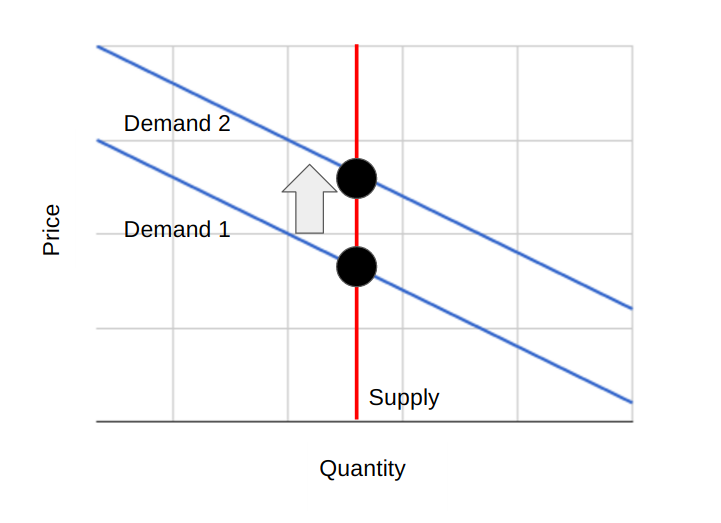
Historic Preservation: Good or Bad For Communities?
Remember when this dress was a big deal? The morning it blew up, my colleague and I were in the office early. No doubt we each had a filing due soon – it was rare for only a couple people to be in the office. We looked at the picture, then spent the next few minutes talking about how dumb it was. Only after five minutes did I say, “The image must be off. It’s just so obviously white and gold.” Turns out, as we’d spent five minutes talking about how ridiculously obvious the color of the dress was, we had actually been seeing it differently the entire time. He thought it was blue and black (he was technically right).
Why bring this up? Well, I was reminded of the encounter the other day when a friend and I got into a conversation about the benefits and drawbacks of historic preservation districts (Wait! Don’t go! I promise this is as interesting as The Dress!). I understand why they’re politically unavoidable, but consider them a big problem. She, on the other hand, was surprised to find that I would be opposed to them. She was especially surprised that I was opposed to them as someone engaged in urban planning and interested in creating livable, lovable communities. Conversely, I was shocked that someone who had studied these things in a formal way thought highly of them. We see historical preservation completely differently.
Why am I so against historic preservation districts? And why was my friend, who has studied urban planning and for whom I have tremendous respect, surprised by that? I can answer the first, but am hoping you’ll chime in if you think I’m wrong. Because to me, it seems pretty obvious. Simply put, these districts directly lead to a constriction of the housing supply. The best example that I can think of in New York is the SoHo neighborhood. Last year, Kelsey and I went on a Jane’s Walk in SoHo. The walk was led by two women whose families had (independently) moved into the neighborhood when they were kids. They had fond memories of their artist dads painting in the lofts, and of the excitement coming from living in an area where residential living wasn’t yet allowed by the zoning code. They could live here, in Manhattan, virtually for free. In case you’re unfamiliar, SoHo is home to some truly great architecture. Some of the very earliest cast iron buildings anywhere in the world can be found in the area. On account of these buildings the entire area is protected by historic preservation laws, and therefore no building can be knocked down, built upon, or changed in any way without jumping through endless loops.
SoHo area has loads of cultural cachet (remember the artists in their lofts?). It’s centrally located in Lower Manhattan with great access to transit. The buildings are beautiful. Plus, the historic designation makes it that much cooler. You can probably imagine the result of all this even if you haven’t seen it in person. It feels like a giant, stunning outdoor mall. The Apple store occupies the historic post office – and that’s only the beginning. Only the most expensive stores and biggest businesses can afford the retail space, and the price of all housing units have gone through the roof. Because what happens when demand increases dramatically but supply is fixed? Here’s your Econ 101 reminder of the day (if supply and demand charts haven’t been drilled into your brain by merciless professors, this will likely make you more confused and not be helpful):

The price goes up! In the case of SoHo case, a lot. The beautiful buildings are preserved (and made into altars of capitalism), but the artists and their families who moved into the area in the sixties and seventies could never, ever, ever afford to live in the neighborhood now. To put it simply, the buildings have been preserved at the expense of the community of people who lived there. The same story has played out across the city, from Greenwich Village to Bed-Stuy. Historic preservation ultimately means that the buildings in a neighborhood are protected while the people are priced out. (I spent loads of time this weekend looking for census-tract level rental prices, hoping to show systematically that rents in historic districts have gone up more than comparable areas, but couldn’t turn up that data anywhere. If anyone knows if it exists, give me a shout!).
The opposing argument, which I won’t be able to make nearly as well, says that buildings impart a sense of place, of history, and of culture. There is a lot of literature supporting the notion that the streetscape has a big impact on the way that pedestrians interact with one another, the use of public space, and more. What’s more, impressive architectural districts (like SoHo and the Village) can drive tourism, leading to higher tax receipts for the city. What’s more, people feel connected to the way their neighborhood feels, and putting controls on any changes can seem like the easiest way to keep things as they are.
But the fact of the matter is that communities are constantly changing, especially now as wealthier people are moving back to the city. Despite the rhetoric, the choice is not between “Historic preservation to prevent development and ensure continuity of the community” and “allow people to build.” Rather, neighborhoods have to choose between keeping the buildings the same while the area becomes too expensive for many current residents (especially, but because of property taxes not exclusively, renters), or destroying some current buildings but adding enough units to keep prices relatively stable and therefore maintain affordability for the current community. I’ll argue till I’m blue in the face that maintaining affordability for the existing community is more important than maintaining a whole neighborhood worth of buildings.
Now, there are many reasons to be skeptical that a free-market approach will maintain affordability for a neighborhood. For instance, as Rick Jacobus pointed out last year at Shelterforce, new development in an area can actually stimulate demand in that neighborhood. Big, shiny new buildings can signal that an area is up-and-coming, and thereby induce more demand than their additional units absorb, leading to the paradox of increased supply and increased prices. That said, increased supply must lead to lower prices at the metropolitan level, even if it does have wacky effects at the hyper-local level. Ultimately, any restriction on building will lead to higher rents across the region.
There’s also reason to believe that the market won’t save buildings that do deserve to be preserved (Penn Station and the Metropolitan Opera House come immediately to mind). And in fact, there may be some public benefit to freezing a whole street in a particular moment in time. While the market will always do some historic preservation on its own (there will never be a time when a fancy person won’t pay huge sums to live in a brownstone in Brooklyn Heights), a strong argument can be made that certain buildings deserve to be protected from market forces. History, beauty, and civic pride are all worthy aims. However, any conversation that doesn’t frankly admit that historic preservation ultimately prioritizes the buildings over the people living in that district is a dishonest one. A city can reasonably say, in some select instances, that the public benefit realized through preservation is higher than the cost borne by the individuals – we have to make difficult trade-offs in cities all the time. It’s just that, in the case of historic preservation, we usually pretend that we’re helping the people we’re displacing. We say we’re protecting communities; instead, we’re protecting brick and stone. I can’t help but think that if we were honest about the decisions we’re making, we’d be a lot more reluctant to blanket whole neighborhoods with historic preservation designations.
So that’s how I see the dress: white and gold, no way about it. Historic preservation can serve a use, but it always prioritizes buildings over people. It drives up rents for local businesses, drives up rents for current tenants, and drives up property taxes for homeowners. Residents of an area may want historic preservation, but these folks fall into one of three groups: those who don’t know historic preservation will cause costs to go up, those who are relatively well-off enough to be able to pay more in return for freezing development (and are indifferent to the challenges this constriction puts on their less well-off neighbors), and those who are hoping to profit from an increase in home values. None of these build community. Historic districts are beautiful, but we shouldn’t ever lose sight of the fact that cities are for people, not for buildings.
How do you see the “dress” of historic preservation? Do you think it can be good for local communities? Why? I’m curious in hearing an opposing argument.
One thought on “Historic Preservation: Good or Bad For Communities?”
This article made me think about two things, both tangentially related to conservation and development: 1) How does NYC zoning affect fast food restaurant and bank branch placement? 2)Walking through the flower district or garment district, which also contain numerous historic buildings, I often wonder about the sustainability of businesses that appear to run on low margins, even as wholesalers, and yet can meet what I expect are very high rents compared to other city locations.